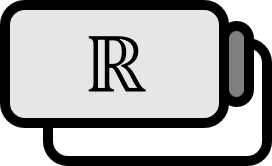Continuity in Every Piece, Smoothness in Every Segment
Definition
A function $f$ is said to be piecewise continuous on an interval $I$ if it satisfies the conditions below:
It has a finite number of discontinuities $x_{1},\ x_{2},\ \cdots ,\ x_{n} \in I$.
At each point of discontinuity, it has both a left-hand limit and a right-hand limit.
$$ \left|\lim \limits_{x\rightarrow x_{i}^{+}} f(x) \right| < \infty \quad \text{and} \quad \left|\lim_{x \rightarrow x_{i}^{-}}f(x)\right|<\infty \quad (i=1,\ \cdots ,\ n) $$
If a function $f$ is infinitely differentiable at all places except a finite number of points of discontinuity, it is called piecewise smooth.
Explanation
Some definitions consider a function to be piecewise continuous if it satisfies only condition 1. In simple terms, if you divide the function at its discontinuities, and each resultant segment is continuous, then the function is considered piecewise continuous.
There are various translations such as piecewise continuity, sectional continuity, and segmental continuity.
